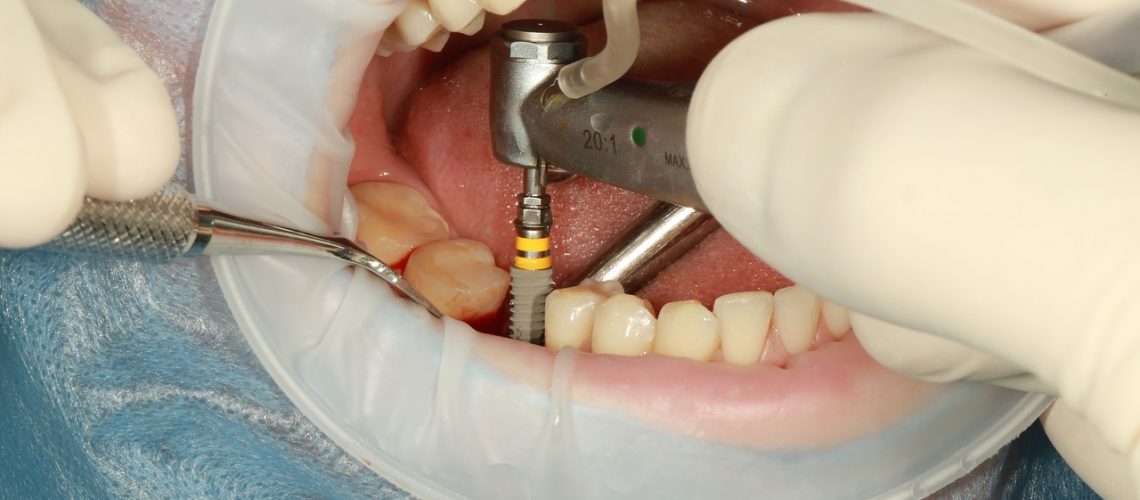The Main Principles Of Dental Sense
Table of ContentsDental Sense Fundamentals ExplainedDental Sense Can Be Fun For Everyone8 Simple Techniques For Dental SenseSome Known Incorrect Statements About Dental Sense
are medical devices surgically implanted right into the jaw to bring back a person's capacity to chew or their appearance. They offer assistance for artificial (phony) teeth, such as crowns, bridges, or dentures. When a tooth is shed due to injury or illness, a person can experience issues such as quick bone loss, faulty speech, or adjustments to chewing patterns that result in pain.Dental implant systems contain a dental implant body and oral implant abutment and may likewise include an abutment addiction screw. Kids dental. The dental implant body is operatively placed in the jawbone instead of the tooth's origin. The dental implant joint is normally connected to the implant body by the abutment fixation screw and prolongs through gum tissues right into the mouth to sustain the attached man-made teeth
(https://telegra.ph/Transform-Your-Smile-Dental-Implants-Root-Canal-Procedures-and-Professional-Teeth-Whitening-01-11)Framework of The Oral Implant System picking dental implants, speak with your dental service provider concerning the potential benefits and risks, and whether you are a candidate for the treatment. Points to think about: Your overall health and wellness is an important factor in identifying whether you are a good candidate for oral implants, how much time it will take to heal, and the length of time the dental implant may remain in location.
Cigarette smoking may impact the recovery process and reduce the lasting success of the implant. The recovery procedure for the dental implant body may take several months or longer, throughout which time you generally have a temporary abutment instead of the tooth. the oral implant procedure: Carefully comply with the dental hygiene guidelines offered to you by your dental copyright.
6 Easy Facts About Dental Sense Explained
Implant failing can lead to the demand for another procedure to fix or change the dental implant system. Recovers the ability to chew Restores aesthetic look Aids maintain the jawbone from diminishing as a result of bone loss Protects the health of the bordering bone and periodontals Assists keep adjacent (neighboring) teeth stable Enhances lifestyle Damages to surrounding all-natural teeth throughout implant placement Injury to the surrounding cells during surgical treatment, such as sinus perforation Injury throughout surgery (for example, fracture of surrounding jawbone) Insufficient function, such as really feeling like the teeth do not attack together typically An experience that the tooth hangs or twisting in position arising from an abutment screw loosening up Implant body failing (looseness of the dental implant body) because of systemic infection, which may be more probable in clients with uncontrolled diabetics issues due to neighborhood infection in bone and periodontals supporting the implant body because of postponed recovery, which might be much more most likely in individuals that smoke Difficulty cleaning the gums around the dental implant, causing bad oral hygiene Untreated gum condition Post-surgical tingling as a result of nerve impingement or damage Constantly alert health treatment carriers and imaging professionals that you have oral implants prior to any magnetic vibration imaging (MRI) or x-ray procedures.
FDA is not familiar with any damaging occasions reported for MRI or x-ray procedures with oral implants. Oral implants systems are typically made from materials that comply with global consensus criteria of the International Company for Standardization (ISO) or ASTM International. These criteria have information of what makes a risk-free material.

A dental implant is a structure that changes a missing out on tooth. With screw-like tools, the specialist inserts an implant right into the jawbone, and it serves as an anchor for a fabricated tooth, called a crown. A gadget called an abutment connects the fabricated tooth to the dental implant. The crown is custom-made to fit the individual's mouth and match the shade of their teeth.
Getting My Dental Sense To Work
Some people are not qualified for oral implant surgery. It is for dental specialists to operate individuals with: severe illnessuncontrollable metabolic diseasebone or soft cells illness or infectionIf these concerns are fixed, an individual can have the surgical treatment. In, dental doctors refrain from this website operating individuals with: If people with any one of the above undertake dental implant surgical treatment, there is a greater threat of the dental implant falling short.

Oral implant surgical treatment is a customized procedure. It's not the same for everyone. But the following provides a basic introduction of what you can expect your dental practitioner, oral surgeon, periodontist or prosthodontist to do: Put the dental implant operatively. Give you time to heal. Connect the article and last crown, bridge or denture.
Next, your surgeon will very carefully put the oral implant into your jaw. If your implant is near the front of your mouth, your dental expert will make a short-lived tooth for you to wear up until you recover.
Dental Sense - An Overview
Your copyright can tell you what to anticipate in your scenario. Throughout the healing stage, your jawbone should fuse to the oral implant. This procedure, called osseointegration, is critical for stability and long-lasting success. This procedure can take anywhere from three to nine months. Sometimes, it might take much longer.
When your implant heals, your dental practitioner can connect the abutment (little connector post) and your final repair (crown, bridge or denture). This typically takes concerning one hour to complete and may call for a second minor surgery. You should not really feel any type of discomfort throughout your dental implant procedure due to the fact that your company will certainly use drug to numb your gum tissues.